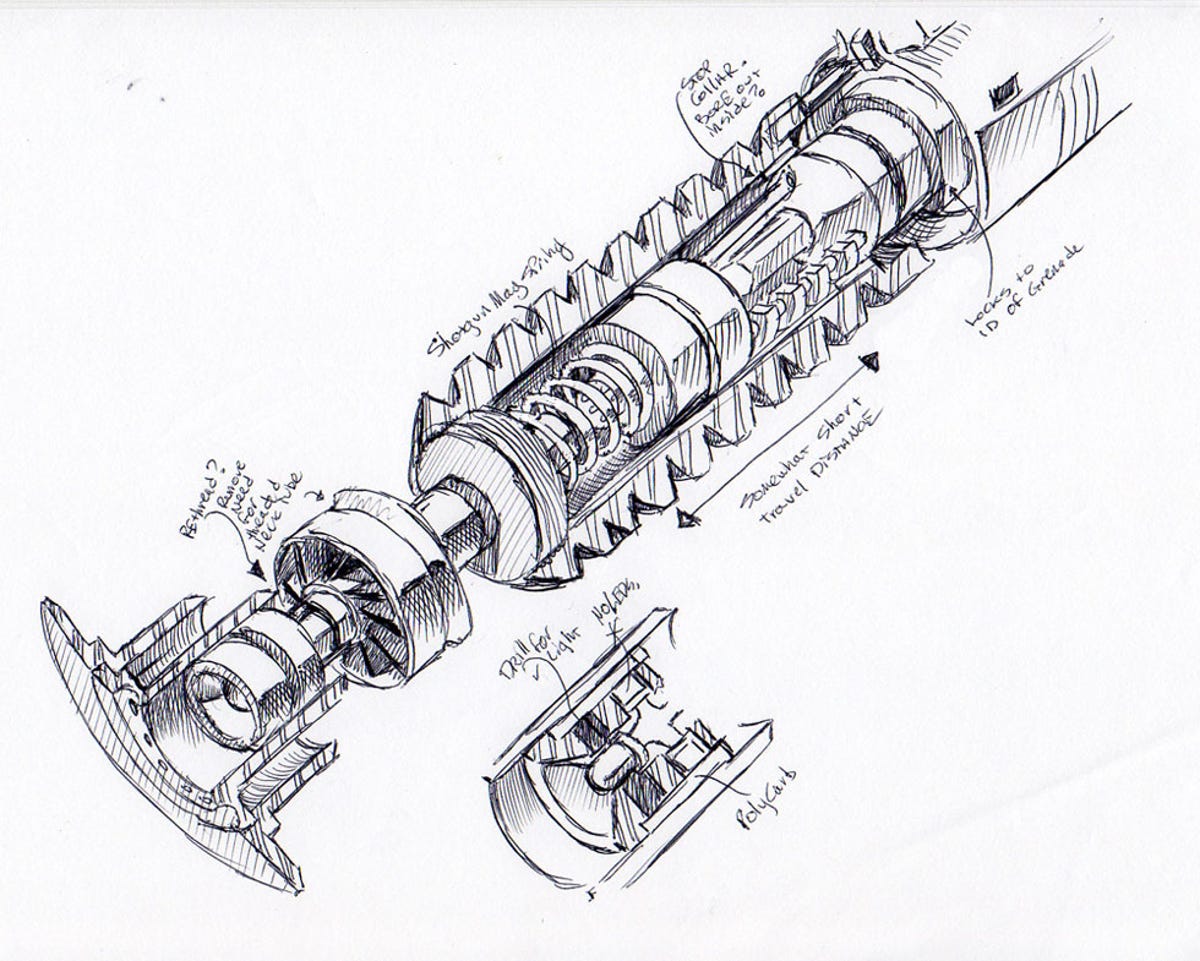Building a lightsaber fit for Obi-Wan (pictures)
We take a closer look at how visual-effects artist Brad Lewis custom-built a real lightsaber that looks just like Obi-Wan Kenobi's weapon of choice.

The stuff dreams are made of
"This is the weapon of a Jedi Knight. Not as random or as clumsy as a blaster; an elegant weapon for a more civilized age," an elder Obi-Wan Kenobi once said to a youthful Luke Skywalker.
Of all the things that stand out from "Star Wars," perhaps nothing's as recognizable as the lightsaber, the preferred energy sword of Jedi and Sith across the fictional sci-fi universe.
Brad Lewis, a BioWare senior visual-effects artist (who primarily works on "Star Wars: The Old Republic"), set off to create a near-perfect replica of Obi-Wan Kenobi's lightsaber as featured in "Star Wars: A New Hope." While this lightsaber won't chop off arms or heads anytime soon, it does look extremely realistic, shines brightly, and plays a variety of sound effects. The image above, sketched by Lewis, acts as an early reference for the construction of the lightsaber.
"When I first started building 'sabers, I built another version of this 'saber as my first one but never thought I could do a 'reveal,' or detachable-blade version, of the 'A New Hope' Obi-Wan 'saber," Lewis told Crave in an e-mail. "It has been a personal challenge since I started this hobby to complete this newest reveal 'saber, and as such, I have been designing it in the back of my head for years. It wasn't until last year when I figured out actually how I would accomplish it that I brought the project off the back burner and focused on building it."
The brains
The brawn
Heart of a saber
According to the Star Wars Wiki, "at the heart of every lightsaber was a set of crystals that resonated to produce the efficient, powerful blade."
In keeping with traditional lightsaber construction techniques (hinted at in the movies and described throughout the expanded universe), Lewis incorporated a real crystal into the lightsaber (housed in a brass chamber).
Concave complexity
"After an evening of milling, drilling, and tapping, I got the three 4-40 support rods evenly spaced, the three LED holes set, and the channels for the wire. I also had to keyhole mill the slots for the crystal," Lewis says on his blog.
The "radiator fins" for the crystal chamber differ from those of Lewis' previous designs, which usually were kept circular. These domed fins closely resemble the internals of Obi-Wan's lightsaber, but creating each piece took a great deal of effort.
"It's a process that involves facing off the brass rod, using an end mill to cut my three-eighths internal hole, setting up the radius cutter, getting it in the right spot, making my concave radius, taking the radius cutter off the tool mount, setting up the part off tool, parting off the blank, facing off the back of the blank," Lewis says on his blog. "Rinse and repeat four times (or more) and then I have to transfer my hole pattern from the crystal mount to the blank. Once I am done with that, I have to flip them all over and cut the convex radius."
Lewis then cuts those circular pieces into half shapes as seen here.
Jedi product design
Almost there
Rechargeable weapon
Portable workstation
Wrapping things up
Sophisticated weapon
Obi-Wan's ornament
The finished lightsaber. "The Obi Reveal 'saber took just over a year and a half to build, perhaps six months of that was focused planning," Lewis says. "Once I started production, I'd say more than 100 hours all stacked up, in nights after work and weekends from June 2011 till July 2012."
A video of the luminous lightsaber in action:
A masterpiece
An image of the fully illuminated lightsaber.
"The blade is made up of 84 high-brightness blue LEDs, 14 per segment, in what we call a 'string blade' in the hobby," Lewis says. "A string blade such as the ones I make allow the blade to progressively light up along the length, and maintain even brightness along the length from base of the blade to the tip. This lets me also do the bar-graph MP3 player mode."
Using a string of LEDs gives the 'saber a shine unlike conventional builds. "Most custom-lightsaber builders use a single, extremely high-brightness LED in the base of the blade, shining up into a hollow diffused polycarbonate tube," Lewis notes. "The advantages of this are ease of assembly and [being] more affordable, but the light tends to be brighter at the base, and dim by the time it gets to the tip."
The enthusiastic 'saber builder explains why the Crystal Focus LED String (CF-LS) soundboard works so effectively. "String blades are very tedious to build, and require a slightly different power source and driver than most single LED lightsaber configurations," Lewis says. "The soundboard must be able to light up each segment progressively to simulate the extending of the blade. Previous to the CF-LS, this was done by harvesting circuitry from Hasbro Force FX lightsabers, and hot-rodding them to drive better and more LEDs."
Enjoy another video showing the completed movie prop replica and its innards:

